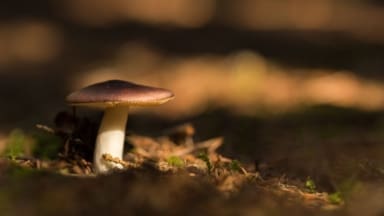
Plants and fungi underpin life on earth, creating valuable ecosystems which provide us with food, medicine, clothing, and raw materials. According to the RGB Kew’s fifth report, themed ‘Tackling the Nature Emergency: Evidence, gaps and priorities’, the natural world is in a state of imbalance, driven by the dual crises of climate change and biodiversity loss. Based on the work of 200 international researchers and 25 scientific papers, the report takes an in-depth look at what is known and unknown about the diversity of the fundamental building blocks of ecosystems and the threats they face.
Dr Tuula Niskanen, from the University of Helsinki and Former Research Leader in Accelerated Taxonomy at RBG Kew, says: ‘Naming and describing a species is the vital first step in documenting life on Earth. Without knowing what species there are and having names for them, we won’t be able to share information on the key aspects of species’ diversity, make any assessments of species’ conservation status to know whether they are at risk from extinction, or explore their potential to benefit people and society. It is essential to know what species of fungi we have here on Earth and what we need to do for them, so that we don’t lose them.’
Key report findings:
- The Covid pandemic and lockdown gave scientists time to work through a backlog of data and unfinished papers, which yielded new finds for science, raising the tally of global biodiversity. In total, more than 8,600 species of plant have been named new to science since January 2020, including the world’s largest giant waterlily, Victoria boliviana.
- As many 3 in 4 undescribed vascular plants are likely to be already threatened with extinction. Researchers found a clear relationship between the year of description and the risk of extinction, with more than 77% of species described in 2020 as threatened. Similarly, species described more recently are more likely to meet the criteria for a higher threat category. Over 59% of species described in 2020 are likely to meet the criteria for Endangered and 24.2% are likely to meet the criteria for Critically Endangered. Kew scientists are now calling for all newly described species to be treated as though they have been assessed as threatened unless proven otherwise.
- Estimates indicate that 45% of all known flowering plant species could be under threat of extinction. The plant families Orchidaceae (orchids), Piperaceae, which includes black pepper; Bromeliaceae, which includes pineapple; and Araceae, which includes many important crops, are among the most threatened.
- Very little is known about the diversity of fungi. To date, only 155,000 species of fungi have been formally named. Scientists now estimate that there are about 2.5 million species of fungi globally and have to date only described about 10% of the world’s fungal diversity. Since the start of 2020, some 10,200 new species of fungi have been formally described as new-to-science. At the current rate of species description, it would take around 750-1,000 years to describe them all.
Professor Alexandre Antonelli, Director of Science at RBG Kew, says: ‘At a time when plants and fungi are increasingly under threat, we need to act fast to fill knowledge gaps and identify priorities for conservation. An array of tools, technologies and approaches are helping us to speed up this work, including genomics and machine learning. Accelerating our understanding of plant and fungal diversity is crucial to achieving the ambitious goals and targets of the recently agreed Kunming-Montreal Global Biodiversity Framework, with manifold benefits to local stakeholders and global scientific knowledge. In future, we need to better coordinate botanical and fungal research and focus on particular taxa and regions, based on the best available evidence and other priorities.’

